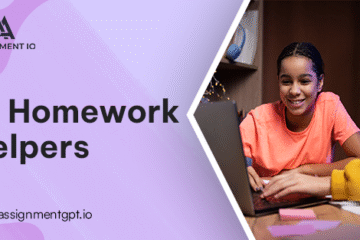When we think about support for children and young people with Special Educational Needs and Disabilities (SEND), we often picture professionals: teachers, teaching assistants, therapists, and parents advocating for their child. While these adults play a vital role, one of the most powerful forms of support comes from peers. Friendships within the SEND community can transform school life, boost confidence, and open doors to inclusion in ways no intervention plan or policy alone can achieve.
Friendship isn’t just a “nice-to-have.” For children with SEND, it can be the bridge to belonging in schools and wider society. Yet too often, this social dimension is overlooked in favour of academic progress or behaviour management. Recognising the power of peer support means acknowledging that friendships are not simply about play; they are a lifeline.
Why Friendships Matter in SEND
For any child, friendships provide comfort, joy, and a sense of identity. For those with SEND, these bonds carry even greater weight. Research shows that young people with SEND are more likely to feel isolated and less likely to have close friends compared to their peers. This isn’t due to a lack of interest in friendship, but rather the barriers created by social stigma, communication differences, or environments that are not inclusive.
Friendships help children with SEND:
- Build confidence. Being accepted by peers boosts self-esteem and reduces feelings of difference.
- Develop social skills. Interaction with friends provides natural opportunities to practice communication, turn-taking, and problem-solving.
- Increase resilience. Peer support can act as a buffer against bullying or exclusion, reminding children they are not alone.
- Enhance learning. Collaborative play and group work with peers can make learning more engaging and accessible.
In other words, friendships do more than fill lunch breaks; they contribute directly to well-being and educational outcomes.
The Unique Value of Peer Support
Peer support in the SEND community is not only about companionship. It’s about shared understanding. Children and young people with similar challenges often “get” each other in ways that adults cannot replicate. A child with dyslexia may find comfort in a friend who understands the frustration of struggling with reading. A teenager with autism may feel more at ease around peers who respect their need for routine or quiet.
This shared experience builds solidarity. Instead of seeing their differences as deficits, young people begin to see themselves reflected positively in others. That sense of “I’m not the only one” can be life-changing.
Peer support also goes beyond shared SEND experiences. Friendships with neurotypical peers can help dismantle stereotypes and foster inclusion. When schools encourage meaningful mixed friendships, they help create communities where diversity is valued and celebrated.
Barriers to Friendship
Despite its importance, friendship for children with SEND does not come easily. Barriers include:
- Stigma and misunderstanding. Peers may not understand a child’s differences, leading to exclusion or bullying.
- Communication challenges. Children with speech, language, or social communication needs may struggle to initiate or maintain friendships.
- Physical separation. Pupils in specialist provision or withdrawn from mainstream classrooms may have fewer opportunities to interact with peers.
- Overprotection. Sometimes, well-meaning adults unintentionally limit friendship opportunities by focusing too heavily on academic or therapeutic goals.
These barriers mean that children with SEND are often left out of playground games, birthday parties, or casual conversations, the very places where friendships are born.
Building Inclusive Friendships
The good news is that schools and communities can actively nurture friendships and peer support. Some approaches include:
- Buddy systems. Pairing pupils with SEND with peer mentors can provide both practical and social support. When implemented thoughtfully, this can blossom into genuine friendships.
- Cooperative learning. Structured group activities encourage teamwork and mutual respect, giving all pupils a chance to contribute.
- Awareness programmes. Educating students about different needs fosters empathy and reduces stigma.
- Inclusive play spaces. Designing environments that allow all children to participate helps friendships develop naturally.
- Clubs and interest groups. Extracurricular activities based on shared passions—art, music, gaming can provide neutral ground for connection.
Importantly, friendships should never be forced. Children sense when relationships are tokenistic. The role of adults is to create the conditions where genuine connections can grow.
The Ripple Effect of Peer Support
When peer support thrives, its impact extends far beyond individual friendships. Classrooms become more inclusive. Bullying decreases. Families feel reassured knowing their child is not socially isolated. Most importantly, children with SEND gain the confidence to participate fully in school life.
There’s also a ripple effect on peers without SEND. Friendships with disabled classmates foster empathy, patience, and an appreciation of diversity. These lessons shape not just kinder classrooms, but more inclusive societies.
Conclusion
The power of peer support in the SEND community lies in its ability to provide what no intervention can fully replace: the simple, human connection of friendship. For children with SEND, having a friend who understands, includes, and stands by them can transform isolation into belonging.
Schools and communities must therefore place friendship at the heart of SEND practice. This means recognising that social development is as important as academic progress, and that peer relationships are not incidental; they are essential.
When children with SEND are supported to form and sustain friendships, everyone benefits. Because at the end of the day, inclusion is not just about policies or programmes, it’s about people, standing together, side by side.





